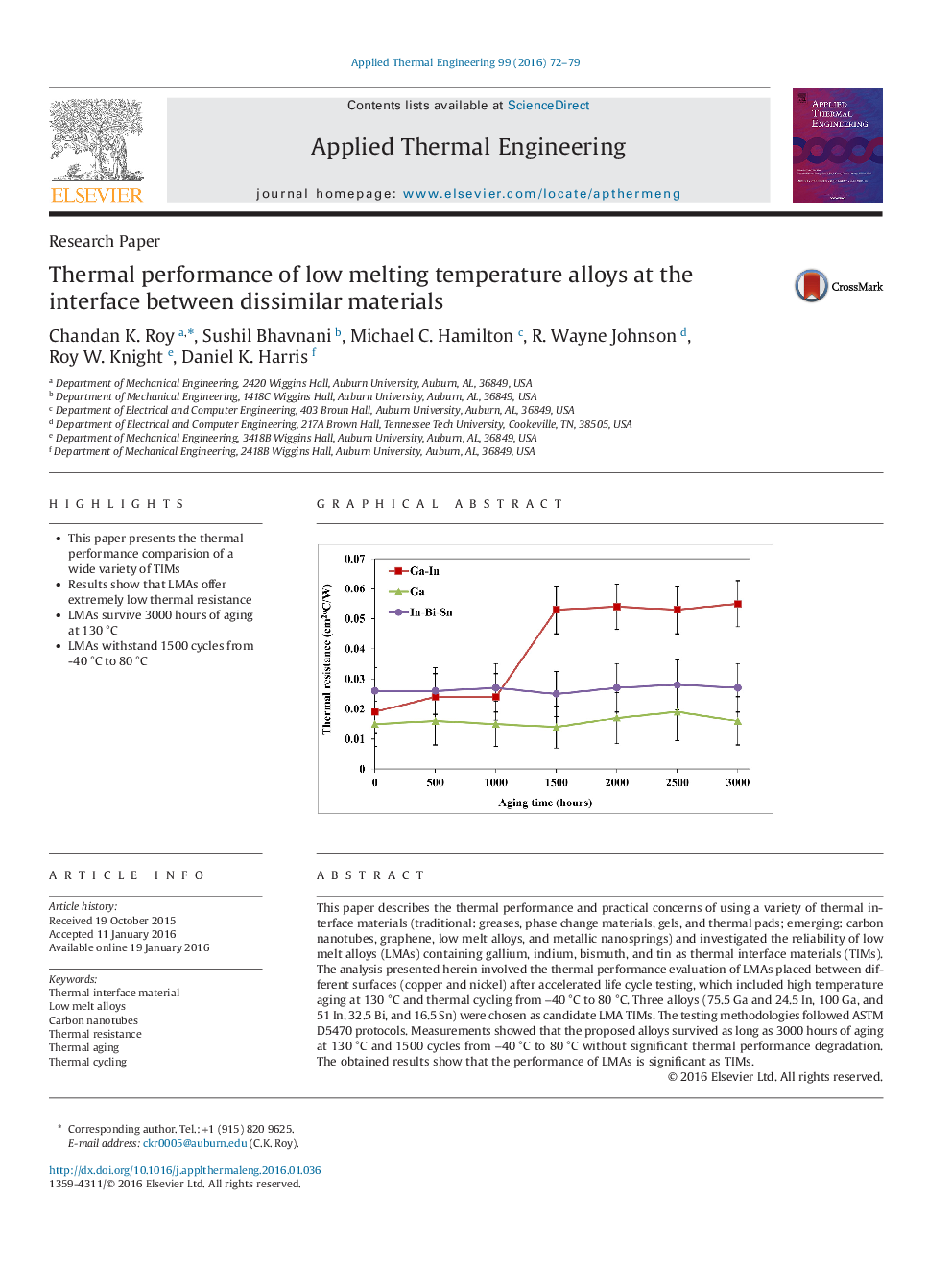| Article ID | Journal | Published Year | Pages | File Type |
|---|---|---|---|---|
| 644661 | Applied Thermal Engineering | 2016 | 8 Pages |
•This paper presents the thermal performance comparision of a wide variety of TIMs•Results show that LMAs offer extremely low thermal resistance•LMAs survive 3000 hours of aging at 130 °C•LMAs withstand 1500 cycles from -40 °C to 80 °C
This paper describes the thermal performance and practical concerns of using a variety of thermal interface materials (traditional: greases, phase change materials, gels, and thermal pads; emerging: carbon nanotubes, graphene, low melt alloys, and metallic nanosprings) and investigated the reliability of low melt alloys (LMAs) containing gallium, indium, bismuth, and tin as thermal interface materials (TIMs). The analysis presented herein involved the thermal performance evaluation of LMAs placed between different surfaces (copper and nickel) after accelerated life cycle testing, which included high temperature aging at 130 °C and thermal cycling from −40 °C to 80 °C. Three alloys (75.5 Ga and 24.5 In, 100 Ga, and 51 In, 32.5 Bi, and 16.5 Sn) were chosen as candidate LMA TIMs. The testing methodologies followed ASTM D5470 protocols. Measurements showed that the proposed alloys survived as long as 3000 hours of aging at 130 °C and 1500 cycles from −40 °C to 80 °C without significant thermal performance degradation. The obtained results show that the performance of LMAs is significant as TIMs.
Graphical AbstractFigure optionsDownload full-size imageDownload as PowerPoint slide
